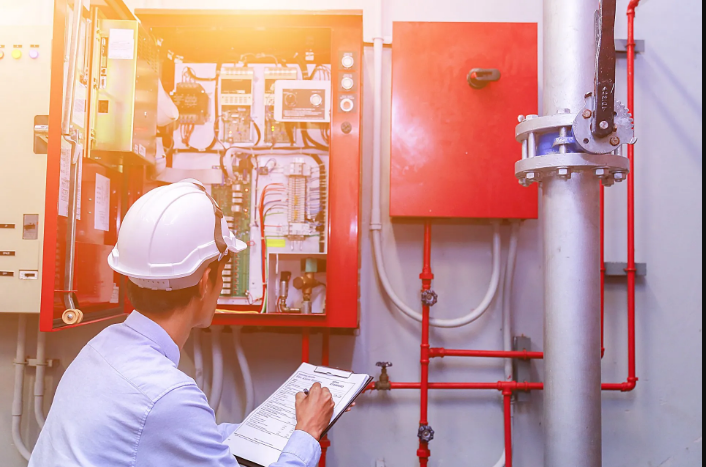Find automatic fire alarm system Design at USCadd, We are fire alarm system suppliers that provides the latest technical automatic fire detection system.

A well-designed fire alarm system is essential for the safety of occupants and the protection of property in any building. Whether it's a residential, commercial, or industrial space, the careful consideration of key factors during the design phase is crucial to ensure the system's effectiveness. Here are some vital points to keep in mind when designing a fire alarm system:
- Building Layout and Occupancy: Understand the layout and purpose of the building. Different occupancy types have varying fire safety requirements. Tailor the system to the specific needs of the space, considering factors such as escape routes, occupancy density, and potential hazards.
- Detection Technology: Choose the appropriate detection technology based on the environment. Smoke detectors, heat detectors, and flame detectors have distinct applications. Utilize a combination of these technologies for comprehensive coverage.
- Zoning and Monitoring: Divide the building into zones for efficient monitoring. This allows for quick identification of the fire's location. Connect the system to a central monitoring station or fire department for immediate response.
- Notification Devices: Install notification devices like horns, strobes, and speakers strategically to ensure that alarms are heard and seen throughout the building. Consider the audibility and visibility requirements based on the size and layout of the area.
- Integration with Building Systems: Integrate the fire alarm system with other building systems like HVAC and access control. This facilitates coordinated responses, such as automatically shutting down ventilation systems to prevent smoke spread.
- Code Compliance: Familiarize yourself with local and national fire safety codes and regulations. Ensure that your design meets these standards to guarantee legal compliance and optimal safety.
- Redundancy and Reliability: Design for redundancy to minimize system failure risks. Incorporate backup power sources and redundant communication pathways to maintain the system's functionality during power outages or equipment failures.
- Maintenance and Testing: Plan for regular system maintenance and testing. Schedule inspections to identify and address any issues promptly. A well-maintained system ensures consistent performance.
- User Education: Educate building occupants about fire safety procedures and the operation of the fire alarm system. Conduct drills and training sessions to ensure that everyone knows how to respond appropriately in case of an emergency.
- Future Scalability: Design the system with future expansion in mind. As the building evolves, the fire alarm system should be able to accommodate changes without major overhauls.
In conclusion, an effective fire alarm system design requires a holistic approach that considers the unique characteristics of the building, the latest detection technology, regulatory compliance, and the safety of its occupants. By taking these key factors into account, you can create a reliable fire alarm system that enhances the overall safety and security of any environment.
Know more: https://www.uscadd.com/key-factors-to-consider-in-your-fire-alarm-system-design
Company Address: 201 - 203 Southgate Building, Madrigal Business Park, Ayala Alabang, Muntinlupa City, Philippines 1780
Telephone Numbers: (02) 5310-3256





Comments